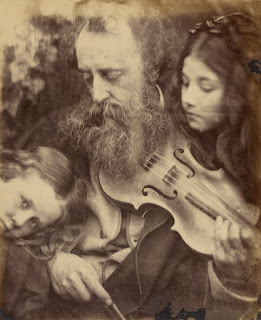Art and Robotics
The industrial revolution changed the way in which
goods were produced and the way people worked.
The emphasis on efficiency was considered counterintuitive to the rules
of nature. For example, the film Modern
Times (1936) showed Charlie Chaplin so focused on his task on the assembly line
that he lost perception of what his socket wrench could be used on. He began to see human body parts as nuts that
needed tightening. Although, this was a
comedic play on the difference between the mechanical and the natural, the film
Metropolis (1927) had a bit of a darker take of this phenomenon. The scene called “Maria’s Transformation,”
was an eerie view of how mechanization can completely void an individual of
their humanity.
The
concern with the lack of authenticity was explored in Walter Benjamin’s essay,
“The Work of Art in the Age of Mechanical Reproduction” (1936). His criticism focused on the film industry as
the replication and distribution of visual content devalues the original body
of work and negates tradition.
Benjamin’s frustration with these practices was a common fear amongst
many of the time. People thought the
changes the industrial revolution brought were unnatural. These perspectives were also exploited by the
aforementioned movies for comedy and horror.
Some
people used the tools of the industrial revolution to further their enhancement
of the natural and even the supernatural.
For instance, Julia Margaret Cameron used photographic technology to
shoot a portrait named “The Whisper of the Muse”. This photo was used to portray the ethereal
imagery of a musician being inspired by a Greek goddess known as a muse.
Besides
using tech as a tool for artistic expression, now a day it is used as a tool
for competition. The San Francisco Robotics
Society of America hosts an annual competition for high school and college
student to show off their mastery of this tech.
https://www.youtube.com/watch?v=ZdvEGPt4s0Y
Charlie Chaplin in "Modern Times" (1936)
https://www.youtube.com/watch?v=IcReykfvqi4
Metropolis: Maria's Transformation (1927)
Julia Margaret Cameron's “The Whisper of the Muse” (1865)
References
YouTube, YouTube, 28 June 2016, www.youtube.com/watch?v=ZdvEGPt4s0Y.
YouTube, YouTube, 19 November 2008, www.youtube.com/watch?v=IcReykfvqi4.
Benjamin, Walter, The Work of Art in the Age of Mechanical Reproduction. Prism Key Press, 2010
“The Whisper of the Muse / Portrait of G.F. Watts (Getty Museum).” The J. Paul Getty in Los Angeles, 1 Apr. 1865, www.getty.edu/art/collection/objects/58674/julia-margaret-cameron-the-whisper-of-the-muse-portrait-of-gf-watts-british-april-1865/.
Events, www.robots.org/events.htm.


Comments
Post a Comment